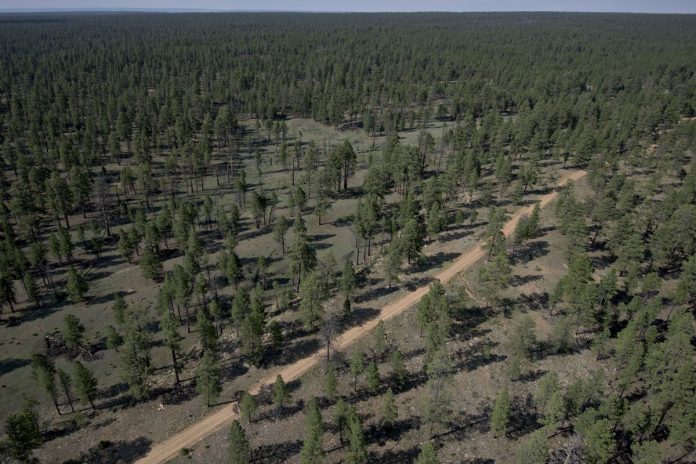(Bloomberg) — A simple climate fix may be hiding in plain sight: some 3.5 million square miles of land capable of supporting new forests and removing 750 billion tons of CO2 from the air. The amount raises the potential upper bound for carbon renewal enough to make international reforestation goals “undoubtedly achievable,” according to new research.
The practical upper bound may be a different story.
Writing in the journal Science, which published on Thursday, scientists from several European research centers and the UN emphasized the potential nature of their results while identifying impediments to actually planting vast landscapes with seed and watching saplings grow. The satellite imagery examined by the researchers doesn’t reveal which areas are public or private or identify those that may have already been set aside for development or cultivation. “We cannot identify how much land is truly available for restoration,” they wrote.
They identified the theoretical reforestation opportunities by combining nearly 80,000 satellite images with environmental and climate geographic data. After building a model that successfully identified where existing forests are, they applied it more widely to find areas where new or regrown forests could exist.
The research is noteworthy in the way the North Star is noteworthy—important for knowing which direction to go, yet an unlikely final destination. “Even more important are the social and economic feasibility issues that were completely overlooked,” said Robin Chazdon, a member of the University of Connecticut Department of Ecology and Evolutionary Biology. “Their numbers are definitely the maximum possible, I believe, but they’re not going to be very attainable.”
Without slashing emissions, the world could lose an additional 850,000 square miles of forest by 2050, mostly in the tropics, as growing conditions change.
Chazdon and colleagues on Wednesday published research in the journal Science Advances, examining where to focus limited resources on regrowing forests destroyed by agriculture and industry. Scoring countries for both conservation opportunities and the feasibility of restoring forests, they found that the top six nations with potential for productive investment are all in Africa: Rwanda, Uganda, Burundi, Togo, South Sudan and Madagascar.
Planting trees seems a simple enough activity for anyone to do, although the scales involved in international reforestation work dwarf any but highly infectious individual efforts. Besides, Chazdon said, expanding forests may not even be the best way to combat the problem of climate change.
“One of the best things people can do is to reduce the consumption of beef,” she said. “A big driver of deforestation has been the creation of cattle pasture.”






